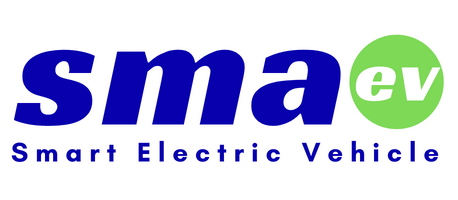Performance improvements in power density, electromagnetic interference, isolation, quiescent current, and noise and precision are giving designers the capabilities to push power further
Learn more about the power-management trends enabling the integration of electronics in our lives.
Improvements our company has made – and continues to make – in new process, packaging and circuit-design technologies are providing engineers with the highest levels of efficiencies for the systems they design. As the world consumes more and more power, we all need to strive to make the energy we produce go further and last longer. Today, generational improvements in five key areas are helping our company push power further.
1. Power density: achieve more power in smaller spaces
Electronic systems demand increases in functionality that often outpace the amount of energy available. This requires improving the amount of power processed in a given form factor – or power density – which is enabled by higher efficiency and switching frequencies. Power designers use devices such as our TPS229922 load switch and our LMG3422R030 gallium nitride (GaN) FET with integrated driver to squeeze more power into smaller spaces to differentiate their products, increase efficiency and improve thermal performance. In the case of GaN, customers have shown significant interest in applications such as AC/DC chargers and server power supplies, where higher density and efficiency add significant value. Of course, power density is critical in virtually all applications, including solar power and electric vehicles. Consumers want solutions that are smaller and consume less power.

2. Low EMI: lower system costs and quickly meet EMI standards
Reducing electromagnetic interference (EMI) – an undesirable byproduct of switching currents and voltages – is increasingly important for electronic systems, especially in automotive and industrial applications. Designing for low EMI can reduce passive filter size, cost, design time and complexity. Power semiconductors such as our family of synchronous DC/DC buck controllers enable engineers to shrink the size of the power-supply solution and lower its EMI. With the LM25149-Q1 and LM25149, engineers can cut the area of the external EMI filter in half, lower the conducted EMI of the power design, or achieve a combination of reduced filter size and low EMI. Our LMQ66430-Q1 buck converter enables engineers to easily meet industry standards by integrating critical bypass capacitors and a boot capacitor. Devices from our company are easy to use, enabling designers to complete their designs faster, with smaller filters and meet industry standards.
3. Low quiescent current: extend battery and shelf life without compromising system performance
In battery-operated systems, the demand for chips that manage low quiescent current (low IQ) – the current consumed when a device is on but is in standby mode – is triggered by the pursuit of achieving higher performance for longer periods of time. Low IQ is important to multiple applications, including smoke detectors, health monitors and smart watches. These applications spend much of their time in sleep mode – waiting to wake up when they’re needed. This makes careful optimization of the quiescent current in our products especially critical. The TPS61094 buck/boost converter, for example, achieves the industry’s lowest quiescent current while integrating supercapacitor charging, making it possible to extend battery life in battery-powered industrial applications such as smart meters. Circuit and process advancements have enabled us to meet the needs of customers who are looking for more functionality while maintaining battery life.
4. Low noise and precision: enhance power and signal integrity
Noise is an electrical biproduct generated by all components and caused by multiple sources. Our company’s low-noise portfolio strives to minimize both the self-generated noise of our integrated circuits and filtering noise from upstream sources. Unmitigated, this noise can negatively impact the performance of sensitive applications such as medical equipment and communications infrastructure. Low noise is especially critical in power supplies feeding precision circuits such as analog-to-digital converters, analog-front ends and clocks for integrated circuits. Our company’s TPS7A94 – the industry’s lowest-noise voltage regulator – provides great power supply rejection so it can also filter out noise before it gets to the load.
5. Isolation: increase safety
Isolation matters in a world where humans and machines interact continuously. Isolation – a barrier that provides protection while enabling the exchange of signals and/or power – is critical for the reliable and safe operation of high-voltage systems. For example, an isolated DC/DC bias-supply module such as our high-density UCC14240-Q1 can be used in an EV traction inverter to power gate drivers while still maintaining isolation between the high-voltage domain and the car chassis. Isolation technologies from our company can improve system reliability, reduce form factors and simplify EMI compliance for our customers.
Our company is at the forefront of power innovation and has a laser focus on helping our customers improve their performance in these key areas. Improvements in process, packaging and circuit design are giving circuit designers the tools to make electronics more efficient, more affordable and our world greener.
A version of this story was originally published on EDN.
Source: Texas Instruments, https://news.ti.com/blog/2022/04/06/5-trends-shaping-future-power-management






